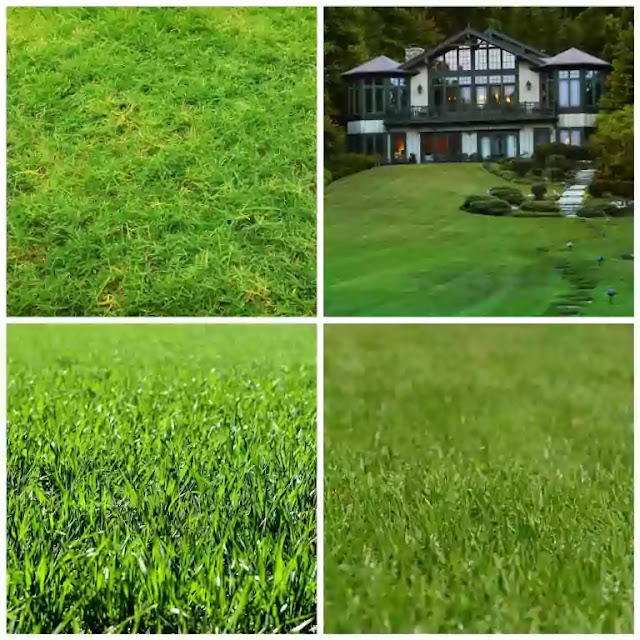Bahiagrass lawn in USA, requirements to grow, process of growing, advantages, and disadvantages of bahiagrass
In the North American continent, Bahiagrass is very popular than anywhere else in the world. The USA is also a country where people are familiar with bahiagrass.
It is easy to grow bahiagrass either on your lawns or in the garden. There are some advantages and disadvantages too of bahiagrass. We will talk about them later but first, we will understand the requirements and process of growing bahiagrass.
Let's understand the above one by one.
Bahiagrass Lawn in USA
Bahiagrass is one of those few types of grasses that has multiple uses. It can use in lawns, pastures, and making compost. It grows in acidic soil but in the further period, it faces odd conditions even the drought. Bahiagrass can tolerate high temperatures.
Let's understand how to grow Bahiagrass on your lawn or empty land. Here, we are starting with the requirements first-
Requirements to grow bahiagrass in lawn(USA)
Soil preparation
- Plowing and cleaning the soil
Although bahiagrass can grow in the least ideal conditions of farming still it is required to avoid any causes that slow down the growth, change in color(yellowish), and uneven growth of grass.
Whether you are growing bahiagrass from seeds or direct from similar bahiagrass, you need a prepared land. First, you need to plow the land and clean the dead plants, wood pieces, spontaneous plants, and stones. The final soil must be properly filtered.
- Adding fertilizers
Next, you need to add fertilizers to the soil before sprinkling the seeds or planting the grass.
Most people use chemical market fertilizers to grow bahiagrass. But it is possible to grow it in organic compost fertilizers.
We suggest avoiding harmful chemical fertilizers because your farm animals can eat this grass. You can use NPK to maintain the acidity in the soil. You can add 2 pounds of NPK to your 2000 square feet area of growing bahiagrass. Mix both of them well with the help of a long handle mixing tool and shower some water to maintain moisture. Your soil is ready to grow bahiagrass.
Soil type, pH, and moisture
Garden soil contains 5.7 to 7.1 pH, mostly slightly acidic to neutral. By adding vermicompost, this pH increase and move towards 6.3 to 7.
The Bahiagrass needs a similar range of acidic soil. It is possible to grow bahiagrass in the least moisture, but it is good to maintain moisture in summers. In the rainy season, there is no need of maintaining moisture. This moisture remains in the soil in the winters too.
Although bahiagrass has the quality to handle high temperatures still moisture maintenance is important for continuous growth.
Process of growing bahiagrass(USA)
Sowing of Bahia seeds
After the soil filtration and adding fertilizers, seeds are ready to sow. Take seeds in your fist and sprinkle them in the soil. With the help of long handle cultivator tool, add slowly and gently cover the seeds with the soil. Sprinkle some water on it and wait for sprouting.
Sprouting
In presence of moisture and quality fertilizers, Bahiagrass starts sprouting within 30 days. Sometimes it can take up to 35 to 40 days. Let them grow in direct sunlight and spray water within 10 to 15 days.
Growing stages
- Sprouting to a small grass
Bahiagrass takes 30 days for sprouting and 20 more days to become small grass. In this period, bahiagrass becomes 3 to 5 inches long.
- Small grass to a maximum height
When bahiagrass becomes a small plant, it starts to grow fast. In a year, bahiagrass becomes 10 inches long. Bahiagrass can become a maximum of 1 to 1.5 feet long.
Fertilizers in a year
It is suggested to use bahiagrass fertilizers that keep the soil acidic and maintain the necessary elements in the soil. NPK is good to do so.
Sprinkle NPK in the grass 3 to 4 times a year. It helps to prevent yellowish color and grow faster.
Cleaning of spontaneous plants
Although it is difficult to work because of initial moisture, often spontaneous plants appear with the bahiagrass. These plants grow with wide leaves and affect the growth of overall bahiagrass.
In starting stages, when bahiagrass grows slowly, spontaneous plants appear with it.
It is suggested that every 15 days from sprouting, you need to clean spontaneous plants to make your bahiagrass grow healthier and faster.
Regular cutting of bahiagrass
After 200 days, bahiagrass is ready for the first cutting. It can grow a maximum of 1 foot and then seeds appear on its upper section. It is required to cut the extra portion to maintain bahiagrass. You can cut the bahiagrass from 2 to 3 inches above the ground.
You can cut bahiagrass 18 to 22 times in a year. Cutting portion of bahiagrass can use to make farm animals pasture.
Advantages and Disadvantages of Bahiagrass
Advantages of bahiagrass
- Easy plantation Bahia grass is easy to the plantation. You don't need to arrange many things to grow Bahia grass.
- Bahiagrass can tolerate drought once if it gets strong roots.
- Bahiagrass is light green and sometimes pigments provide them uniqueness.
- Bahiagrass is also used as pasture for farm animals like dairy farms, goat farms, and poultry farms.
- The cut bahiagrass may use to make organic compost.
- Bahiagrass maintenance cost is very low.
- Bahiagrass grows best in direct sunlight. It is easy to tolerate higher temperatures for bahiagrass.
Disadvantages of bahiagrass
- Because of its uneven appearance, Bahia grass is not the first choice to grow on home lawns.
- People who want dark shining green grass can avoid the use of Bahia grass on their lawns.
- Bahiagrass can't grow in high pH soil.
- It is difficult for Bahiagrass to grow in shady places. Bahiagrass prefers only direct sunlight to grow to its full potential.

